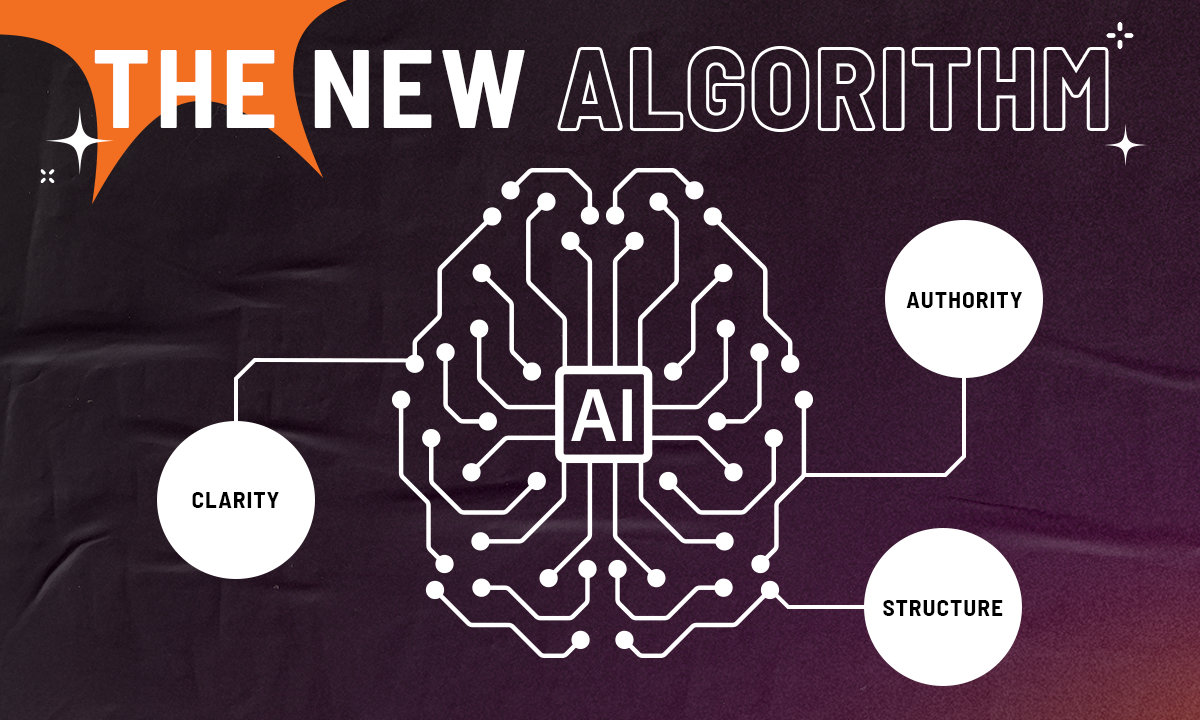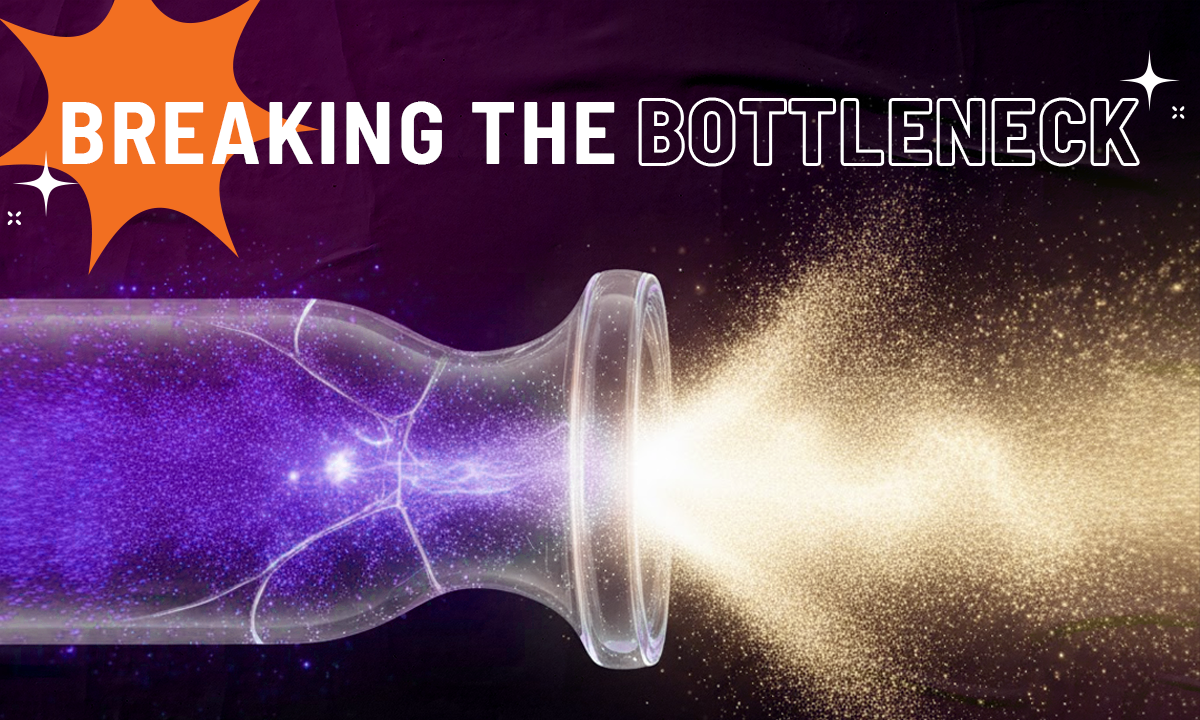
How to Build an SEO Strategy That Works for 2026
You're ranking on page one for 20 keywords. Traffic is up 40% year over year. Your content calendar is full through Q2.
And your revenue from organic search hasn't moved.
Here's what's happening: you're solving for visibility when your actual problem is conversion. Or you're optimizing service pages that already convert when the real issue is that nobody can find them.
The most effective SEO strategies in 2026 don't start with keywords or content plans. They start with diagnosis. Where does your funnel break down? Are qualified visitors not finding you, or are they bouncing after they arrive? The answer determines everything that follows.
This is why the best SEO work looks less like a tactics checklist and more like a quarterly operating system. You identify your biggest constraint, execute focused projects that address it, measure what moves, and adapt when the bottleneck shifts.
The fundamentals still matter. They've just evolved faster than most strategies account for. Let's break down what that actually looks like in practice.
Your Strategic SEO Framework: What You Need to Know
Start with your revenue goals — not your keywords. SEO should drive measurable business outcomes, not just impressions or clicks. That means working backward from your funnel to pinpoint where it’s underperforming.
If you’re not getting enough qualified leads, find out why:
- Do your pages rank but not convert?
- Do you rank for the wrong intent (research vs. purchase)?
- Or do you simply not have enough visibility in the first place?
Once you find the constraint, pour your focus there.
- If you need new content, create it.
- If your existing pages are slipping, optimize them.
- If traffic is solid but conversion is weak, strengthen your offers.
Consistency beats complexity. One completed quarter of focused effort outperforms six months of half-done tactics.
And yes: the old SEO playbook still matters. Topical authority, technical health, links, and great content remain the pillars of visibility. What’s changed is how quickly those signals evolve and how tightly they’re tied to user experience and AI interpretation.
SEO Fundamentals Still Work, They Just Evolve Faster
Let’s kill a myth right away: SEO isn’t dying. It’s adapting.
The fundamentals you’ve relied on for years still matter, but they’re no longer static. AI search, conversational queries, and semantic relationships mean your content must speak the language of both humans and machines.
Here’s what still drives performance (and what’s changing):
1. Topical Authority Is the New Link Building
Authority still rules. But AI systems now measure it holistically, looking for patterns across your site that show depth and consistency, not just keyword frequency.
Cover your topics like an expert who knows the field from every angle. Reference industry data, cite peers, and use your own frameworks.
Getting mentioned by others — in articles, podcasts, or community discussions — carries more weight than a dozen low-quality backlinks ever will.
2. Technical SEO = Trust
Your technical foundation is your website’s reputation score. Page speed, Core Web Vitals, mobile performance, structured data, and crawl accessibility all feed into how search systems interpret reliability.
If your pages load slowly, your rankings stall. If schema is missing, your content becomes invisible to AI-powered summaries.
3. Quality Content Still Wins (But “Quality” Has Changed)
Unique frameworks. Custom visuals. Real-world examples. That’s what Google and AI crawlers look for when evaluating whether your content adds value.
Think: original thought + clear context. Don’t just rephrase what others say — synthesize insights.
4. Links Are About Visibility, Not Just Authority
Link building is shifting toward brand visibility. Mentions across the web, through PR, guest posts, podcasts, or expert quotes, now signal credibility more than old-school link swaps.
Focus on being cited, not just linked.
5. Keywords Are a Starting Point, Not the Destination
Keywords are still how you gauge demand. But ranking for a term doesn’t guarantee it’s the right one.
Use them to identify what your audience cares about, then build complete experiences around those topics.
How AI Search Changes Your Content Approach
AI search doesn’t erase SEO — it raises the bar. The systems behind Search Generative Experience (SGE) and other AI platforms rely on context, credibility, and clarity to determine which brands get referenced.
Here’s how to make sure you’re on that shortlist.
Implement Structured Data and Semantic Keywords
Help AI understand how your content fits into broader topics. Use schema markup to define entities (like products, authors, and FAQs) and sprinkle in natural semantic terms that reinforce your expertise.
For example, an article on “internet access” should include terms like “bandwidth,” “dedicated connection,” and “latency” — not for keyword stuffing, but to show contextual fluency.
Answer Questions Directly
AI assistants love clear, authoritative answers. If someone searches “how to build an SEO strategy,” and your article outlines a process step-by-step — with data and examples — you’re more likely to be cited.
Build Off-Site Visibility
AI systems reference multiple domains when summarizing results. Get quoted in industry publications. Publish original research others want to cite. Participate in expert roundups.
Optimize for Zero-Click Searches
Not every impression leads to a click anymore. Only about 36% of searches do. That’s why down-funnel content (case studies, demos, pricing, and solution pages) matters more than ever. When users do click, they’re ready to buy.
Your Bottleneck Determines Where to Focus
SEO success doesn’t come from doing everything. It comes from doing the right thing at the right time. Start by defining your revenue goal, then trace backward to the roadblock.
Ask:
- Are we ranking but not converting?
- Do we have strong conversion rates but low traffic?
- Are our rankings declining due to technical issues or poor content coverage?
Each answer leads to a different focus area — and a different strategy.
Traffic and Rankings Don’t Equal Revenue
A 50% bump in traffic looks good in a dashboard — until you realize those visitors aren’t converting. Here’s the reality: SEO success without revenue is noise.
High-volume informational keywords bring awareness. But unless you connect them to middle- and bottom-funnel content, your growth stops at curiosity.
Track the metrics that actually reflect business health:
- Qualified leads
- Conversion rates by source
- Cost per acquisition
- Revenue attribution
Different content serves different stages of the funnel. Don’t mistake “educational” for “effective.” Awareness content builds trust. Transactional content drives action. You need both, but in the right balance for your bottleneck.
Make Strategic Content Decisions Based on Data
Once you’ve identified your constraint, the next question is what kind of content will move it?
When to Create New Content
New content fills gaps. It builds your topical map. If you have no coverage for key topics or your competitors rank for commercial-intent keywords you’ve ignored, start creating. Fresh content also signals activity — a ranking factor AI systems still notice.
When to Optimize Existing Content
Optimization delivers faster ROI. Updating or expanding pages that already rank can lift organic traffic by 70% or more, often with a fraction of the effort it takes to create new assets.
Start with pages that lost the most traffic or slipped in rankings in the last 90 days. Add new sections, modern stats, or better CTAs.
Quality in 2025 Means Depth + Authenticity
To stand out in a sea of AI-generated content, yours needs to sound like it came from a human who’s done the work.
Show lived experience: frameworks you’ve built, case results, lessons learned. Structure everything clearly, cover subtopics thoroughly, and link internally to related resources. Update quarterly — not just when traffic drops.
Quarter-by-Quarter: Build, Execute, Measure, Adapt
Here’s the framework that keeps your SEO strategy both focused and flexible:
1. Map Your Quarterly Projects
Pick 1–3 high-impact projects per quarter. Each should address your current bottleneck and have a measurable outcome tied to business goals.
Examples:
- “Optimize the top 10 service pages to improve conversion rate by 15%.”
- “Create 12 new pieces targeting commercial-intent keywords.”
- “Reduce average page load time to under 2 seconds.”
Each project should include a clear hypothesis — what metric it will improve and how it connects to revenue.
2. Execute Completely Before Measuring
Half-finished work produces half-truths. Complete your full scope before analyzing results.
Avoid pivoting mid-quarter unless there’s a major algorithm shift or critical business change. Otherwise, trust your plan long enough to gather real data.
Give your improvements time to take effect — technical changes can show impact in days; content and authority shifts may take months.
3. Measure Results and Update Your Strategy
At the end of each quarter:
- Compare performance to your success criteria.
- Reassess your bottleneck — has it shifted?
- Identify what worked and double down.
- Flag what didn’t and adjust your approach.
This cyclical structure turns SEO from an endless chase into a predictable rhythm of action and insight.
Getting Started With Your First Quarter
Here’s how to kick off your first 90-day SEO plan:
- Audit your current state. Review content quality, backlinks, site structure, page speed, and analytics. Establish your baseline metrics.
- Perform keyword and competitor research. Identify where competitors outrank you and which high-intent topics you’re missing.
- Diagnose your bottleneck. Traffic problem? Create new content. Conversion problem? Improve UX and CTAs. Ranking problem? Optimize technical and on-page factors.
- Map 1–3 measurable projects. Keep them small, focused, and aligned to your constraint.
- Execute consistently through the quarter. Don’t chase trends or algorithm gossip. Focus on execution and insight.
The Bottom Line
An effective SEO strategy in 2026 isn’t about chasing Google updates or stuffing keywords into AI summaries.
It’s about aligning SEO with your business model — one quarter, one constraint, one measurable project at a time.
Traffic and rankings will follow. But the real signal of success is growth that compounds because your content, structure, and data all move in sync.
Because in the end, SEO isn’t just about visibility. It’s about building systems that help your brand be found, trusted, and chosen, over and over again.
share this article
Explore Similar Posts
Get In touch
We’d love to share how digital marketing can help elevate your brand — and your business’s bottom line.





.jpg)


